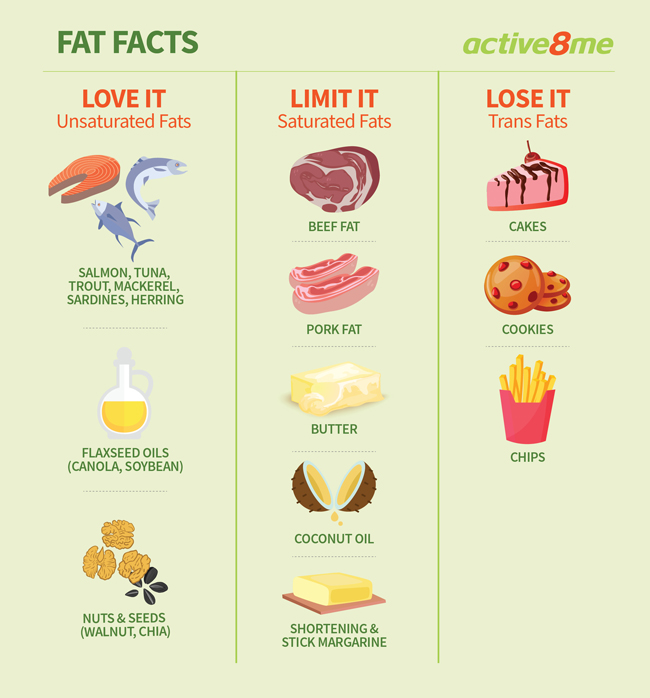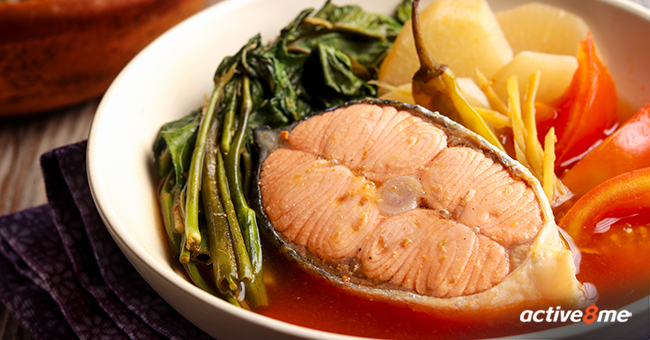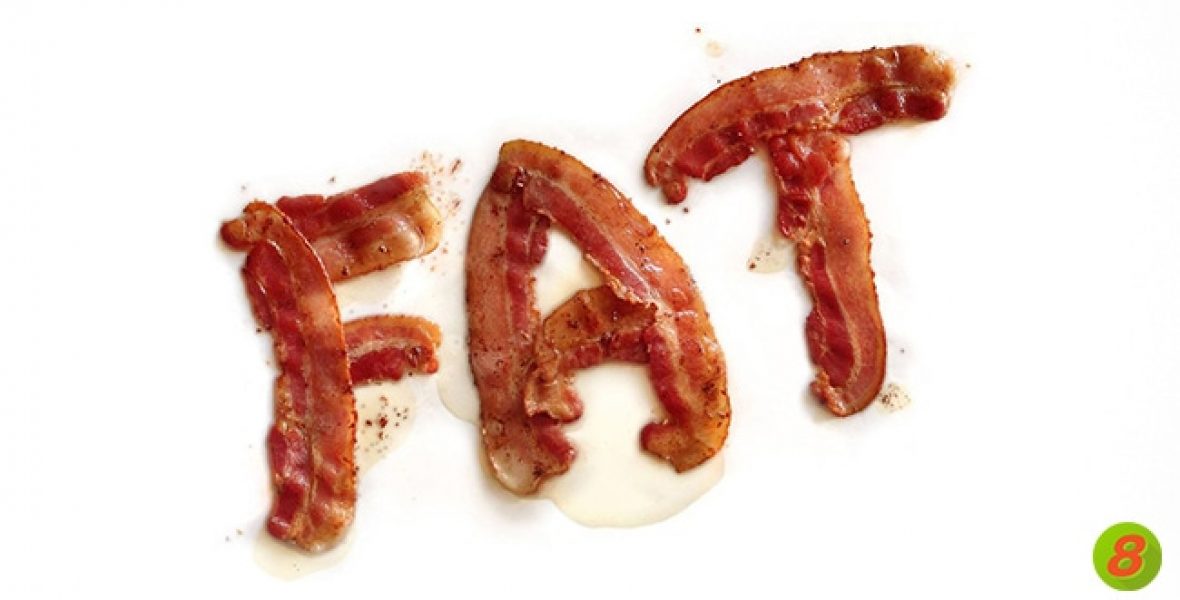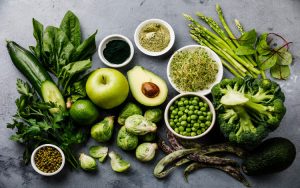For many years FAT has been a dirty word. But that only seems fair as eating fat makes you fat, right?! Well, it’s time to think again. Today we’re going to sort fact fat from fiction so you can better understand the good, bad and the ugly of dietary fat.
To understand why fat is a dirty word today, it’s helpful to take a quick jump back in history. In the 1980’s, following generalised medical advice during that time, we were encouraged to cut the fat from our diets. This literally meant cutting the fat from meat, avoiding cooking with oils and purchasing everything labelled low fat. Fat was systematically banished from our diets. This was considered the answer to ‘fixing’ our issue of expanding waist lines and fatal heart troubles. But, in fact, following this regime hasn’t helped the growing obesity problems or our cardiovascular disease, with a myriad of research suggesting that we got a lot wrong about fat.
Trans fats, mono, poly, saturated, unsaturated, omega this, omega that… the list of ways to describe types of fats goes on. So, it is easy to be confused. It’a also understandable that that what many of us know about fat is either incorrect, misguided or only half true. To help you make better decisions about the type and amount of fat you should be eating, we’ve included fat as our latest Fact or Fiction focus.
So, what exactly is dietary fat?
Dietary fat, or the fat we eat is a macronutrient. Along with carbohydrates and proteins, fat is needed in ‘macro’ or large amounts for energy and bodily functions. Dietary fat is made up of chemicals known as fatty acids. Fatty acids have two main types, saturated and unsaturated.
The fats found in foods or oils are either saturated with fatty acids, for example butter, ghee, lard, fatty cuts of beef, pork and lamb and processed meats. Or, unsaturated with fatty acids, such as olive oil, nuts, seeds, avocado and oily fish to name a few. Unsaturated fats are generally considered ‘healthier’ types of dietary fat.
Another type of unsaturated fatty acid is omega-3. This is found in oily fish, such as tuna and sardines as well as plant products such as walnuts and chia seeds. Omega-3 fats are considered beneficial in controlling the amount of harmful cholesterol LDL (Low Density Lipoprotein) in your body by promoting the production of HDL (High Density Lipoprotein). It is the LDL cholesterol that is famed for ‘clogging’ arteries.

Do we even need fat in our diet?
Most chefs around the world would take a collective gasp at the thought of removing flavoursome fat in our foods. But aside from flavour reasons, the short answer is yes. We absolutely need fat in our diet. Dietary fat needs to be consumed for essential fat-soluble vitamins (A, D, E, K) to be absorbed. Fat is also important for the structure of our cells, for production of hormones and for healthy skin and hair.
Not all fat is bad – the good, the bad and the ugly
Now that we know that we all need to consume fats, it is important to consider both the type and amount of fat you eat. Generally, focusing on what is good in our diet and a balance of wholefoods is better than demonising specific foods or food groups, whether that be fats, sugars or whatever fad is on trend. Your diet will always be better if you crowd out the ‘so-called’ bad foods with minimally processed whole foods.
The rule of thumb is that you should consume mostly polyunsaturated fats, some saturated fats and try to avoid trans fats. Trans fats are plant oils that have been through a process of hydrogenation. They’re mostly found in refined vegetable oils like canola, rapseed and vegetable shortening as well as most processed foods like biscuits, cakes, pastries and potato crisps. The biggest issue around eating trans fats is how dramatically they increase LDL cholesterol and decrease HDL cholesterol, leaving you with higher risk of heart disease.
What? You want me to eat more fat?
The reduction of fat in our diets has left a hole to fill. Most people who jumped on the ‘low-fat’ ban wagon found they filled their missing fat and hunger, with more carbohydrates. This also occurred across the food industry with refined carbs added to make the low-fat options more palatable. This has added to the epidemic of heart disease, diabetes and obesity.
You should be consuming around of your calories each day from ‘good’ fats. However, the majority of people are consuming too many trans fats and not balancing the proportion of saturated fats to unsaturated fats, such as omega-3s. Essentially, most of us are not eating enough of the right fat!
Tips – Replace canola oil with olive oil when cooking at low to medium temperatures. Think carefully about the fat from your protein source. Also try to include oily fish such as salmon or sardines into your meals two to three times per week.

I thought saturated fat was bad?
For many years, saturated fat has been tarnished as being the ‘bad’ fat. But studies are emerging that can find no direct link between saturated fat and heart disease. Saturated fat comes from dairy sources, such as butter, cream, ghee, regular fat milk and cheese. As well as from fatty cuts of beef, pork and lamb and processed meats like salami, sausages and the skin on chicken. While it is positive that saturated fat is not to blame, it is still important to monitor your intake, as these concentrated forms of energy add up to a lot of calories. That means, a small amount of fat, just one gram is equivalent to 9 calories! So, eating large portions can easily tip you into the weight gain territory – which does lead to health problems!
While not all fats are bad, we can’t clump them all together for their nutritional benefits either. Many studies have found that the change from saturated fats to polyunsaturated fats has actually had a positive impact on cardiovascular .
Funny how it all comes back to balance
If you’re looking for excuses as to why you’re fat, the cold hard truth is that fat isn’t to blame. The simple fact is weight gain happens because you consume more energy than you burn. Fat is a great energy source and when consumed as part of a balanced diet can actually lead to many health benefits. However, remember with all macronutrients it is not just what you eat, but how much you eat. So, in the context of fat it is important to remember what type of fat you’re eating (remember – mostly polyunsaturated fats are best), plus how much fat you are eating. This is even more important because fat is a concentrated source of calories (approximately 9 calories per gram of fat) and so it can add up to weight gain if over-consumed. Can you see now why people on reality survival TV shows love eating fat?!
The takeaway message
Not all fat is bad. In fact, it is an essential macronutrient. But like all food groups the amount and type of fat you eat is important – not only for your waistline but your overall health.
If you want all of your nutrition needs simplified, then try one of our Active8me programs! They have dietician designed meal plans and recipes that provide you with the right proportion of nutrients. The delicious array of meals can be customised to your tastes and even incorporates advice about getting the right balance of foods when eating out. We’ve covered all your nutrition needs. Plus there’s more. Workouts, mindset lessons, tracking and a whole lot more. It’s like having a dietician, personal trainer and life coach in your pocket. Check out the Active8me app today.












